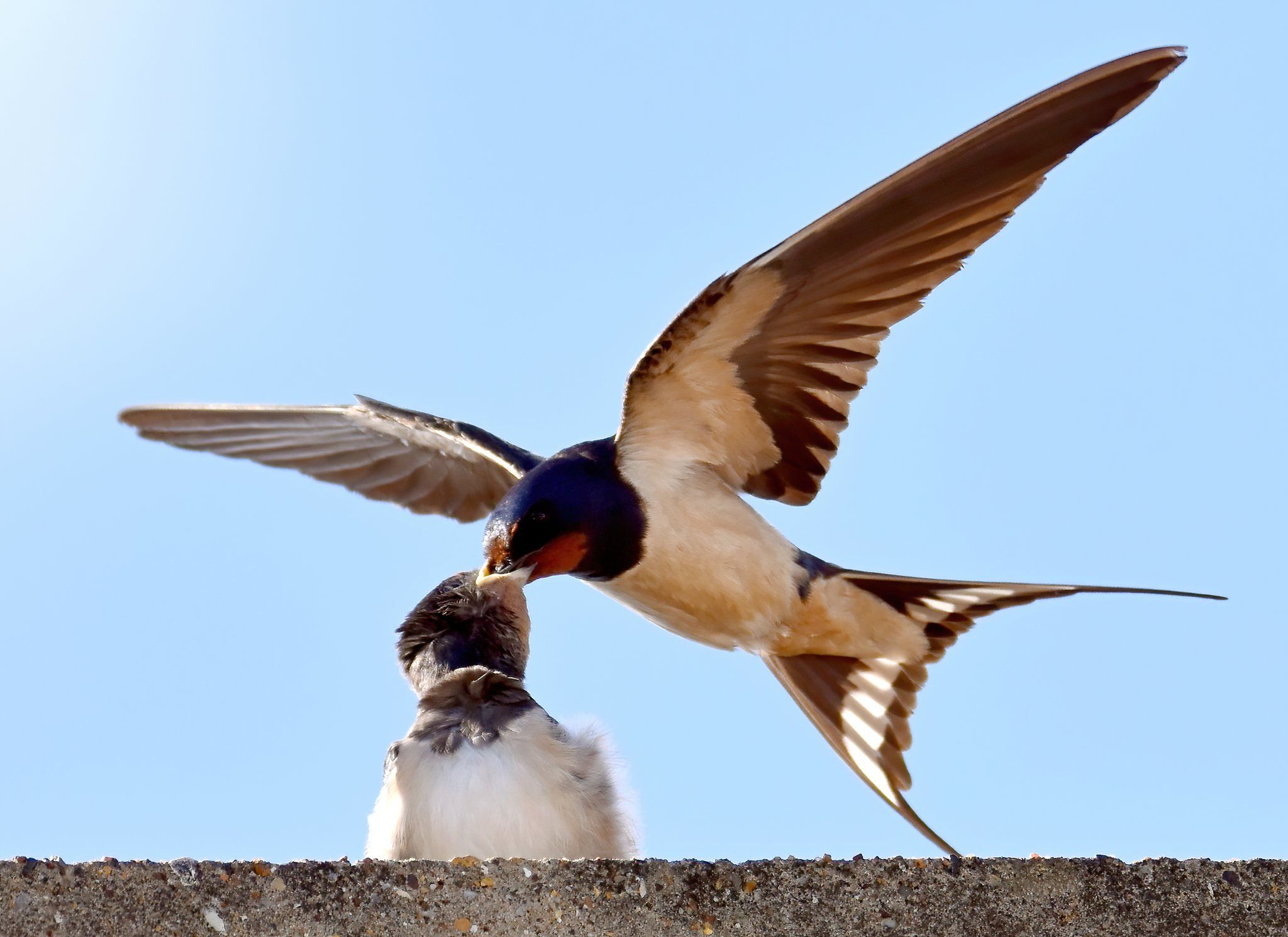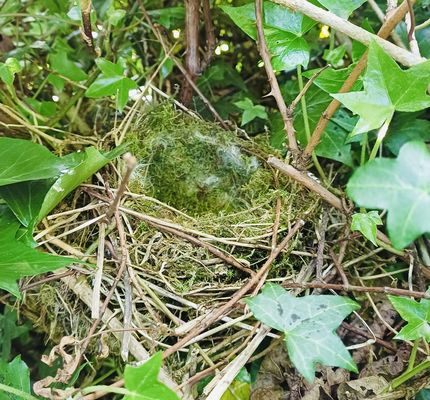MOST farmers love their swallows – they’re like a lucky charm to them. These summer visitors must be our most beautiful bird, with their shiny blue backs, red bib and pointed tails. They are our very own bird of paradise and there’s not many nicer sights than one flying over an old traditional farmhouse.
Although we think of them as country birds, that's not strictly true. They only like the countryside because they can find a nest site there – usually in barns. If a suitable sheltered, open building exists in the city, they’ll just as quickly move in, although it often has tragic consequences. Dúlra remembers them nesting in the giant B&Q building at Boucher Road where they’d be flying over shoppers' heads. The huge doors there must have been open almost all the time, but once they were closed, perhaps during a holiday, the birds were in trouble.
Derelict houses too make great nesting spots. A couple of pairs are nesting in some on the Shore Road in North Belfast, feeding their chicks through broken windows, but again they’re taking a chance – the windows could be replaced any time, accidentally cutting the adults off from their brood.
But for Dúlra the most famous city swallows are those in Casement Park. During matches – yes, Dúlra can remember that far back – they used to skim the grass around the players’ feet, picking up near-invisible insects. Their nests were built of mud under the roof of the stand. Dúlra went back this week to see if they were still there, but the main gate was closed to visitors. Still, there were at various times swallows, house martins and swifts in the air in the distance, so it seems they were still breeding there. (Note to builders: the stand will have to be removed in winter when work finally starts on Casement.)
But normally to enjoy the joyous beauty of a swallow you’ll have to go to the country. Which is what Dúlra did last week and how he came across this nest. It was in the barn of the farmhouse he was staying in in Donegal.
HOME FROM HOME: The swallow's mud nest in the roof of the holiday home barn
Swallows – fáinleogaí in Irish – came free with the property but Dúlra would have happily paid extra for them. They whizzed over the roof all day, then sat together as a family on the phone lines out front, chattering with each other like a bunch of old locals discussing the weather. Which was probably exactly what they were talking about, because for swallows, the weather is a matter of life or death.
That fortnight of damp, cloudy weather we have just had meant a sudden, sustained drop in insects. It led to difficulties feeding young hungry mouths in the nest. People who had cameras in swift boxes reported the adults only returned once a day to feed their young, because that’s how long it took them to find a mouthful of flies for them. Many young perished. It’s one of the reasons councils and garden owners are being encouraged not to cut grass. Short lawns are dead zones for insects, but once they are allowed to grow into a mass of wild grasses and flowers, the insects multiply. And the air above that will be full of flies for birds like swifts and swallows.
Insecticides are their enemy, while some modern farms seal their barns rather than leave the doors permanently open and that too means swallows are not welcome. But most farmers want the swallows to keep them company, who wouldn’t?
The Donegal swallows were last week on their second brood. There were two eggs inside the nest but the parents will have a race to raise these youngsters to adulthood before the shortened days and cold winds force them to leave for Africa.
Last year Dúlra discovered that swallows actually once bred in his own house. A baby robin was in the garage, so he searched it carefully for nests. And in the corner above the door there was one, only this one was many decades old. It was unmistakingly a swallow’s mud cup. The birds must have used the garage like a farmer’s barn while the houses were being built. It’s a pity they were forced to move on when the windows and door were put in, but Dúlra still looks on the old nest like it was a good luck charm for the house. A blessing of sorts from the magical swallow.
•If you’ve seen or photographed anything interesting, or have any nature questions, you can text Dúlra on 07801 414804.









